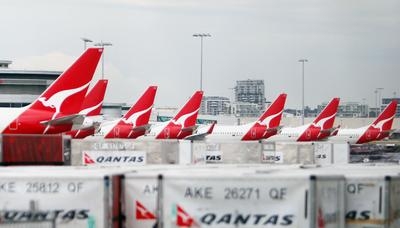But the Europe strategy is symbolic of a long-run shift in which Qantas is steadily being driven back to routes to and from Australia.
Meanwhile, its great competitor, Singapore Airlines, is gaining a stronger foothold inside Australia and in the region. Cathay Pacific is also a strong competitor, even though it is a fellow oneworld alliance member. Qantas’ survival depends on building partnerships with airlines that fly beyond its first points of contact in Asia. Currently, it has no such partner. Which airline should Qantas choose?
China will be the primary focus for Qantas, especially since it reportedly struggles with marketing and distribution in this country. Qantas has three potential partners in China: Air China, the national carrier; China Eastern, which has a base in Shanghai; and China Southern, which has a base in Guangzhou.
China Southern has long been the largest airline in China for the number of passengers it carries. In 2012, it signed a strategic cooperation agreement with Tourism Australia to build the ‘Canton Route’ — the route connecting Europe, Asia and Australia. China Southern has also allocated a large amount of resources to developing Guangzhou into a transfer hub over the past three years. China Southern has significantly increased the number of flights it makes to Australian cities; it has become the largest carrier in the China–Australia market; and its market share is growing. But, with its competitive position and its apparent ambitions, it is doubtful whether China Southern would consider close cooperation with Qantas at this stage.
Air China is China’s flag carrier based in Beijing and is a member of Star Alliance. It has a strong political role as the national carrier and has great influence over government aviation policy. It appears that Air China does not have a strong incentive to innovate and expand. In the domestic market, it mainly provides services between Beijing and provincial capitals and has a much smaller network than China Southern. Geographically, therefore, Air China is not an ideal partner because it would be difficult for Qantas to send passengers into China via Beijing and to take advantage of Air China’s domestic network.
Only China Eastern has shown great interest in developing a strategic partnership to acquire management skills, which implies that it could be a suitable partner for Qantas. But the story of China Eastern’s previous dealings with Singapore Airlines is worth bearing in mind.
China Eastern and Singapore Airlines (in partnership with Temasek Holdings) signed a deal in November 2007 to sell to the latter a 24 per cent stake in China Eastern. The deal was quickly approved by the Chinese government, but Air China opposed it and successfully influenced minority shareholders, who voted against the deal at the company’s shareholder meeting. It is believed that Air China’s stance was also influenced by its own strategic partner, Cathay Pacific, which did not want to see its longstanding rival acquire the right to enter the Shanghai market via a link with China Eastern.
Qantas and China Eastern have already cooperated in some matters, such as codesharing, and have also set up Jetstar Hong Kong. A low-cost carrier in China would be a logical next step. By using China Eastern’s network, Qantas could increase the frequency of flights to Singapore, Malaysia, Thailand, Hong Kong and Shanghai, where passengers can easily transfer to all parts of China, and fly on to Europe. One complication, however, is the matter of alliances.
Most people expected that China Eastern would join the oneworld alliance after Air China joined Star Alliance and China Southern joined SkyTeam. Surprisingly, China Eastern chose to join SkyTeam in 2010. China Eastern’s chairman, Liu Shaoyong, was the chairman of China Southern when it became a member of SkyTeam, and Liu may have a plan for China Southern and China Eastern to form an alliance to counter Air China. However, network-specific arrangements often seem to be more important these days than membership of a large group alliance.
The door is still open for a strong Qantas–China Eastern partnership. The world must wait to see how the link with China Southern plays out, but China Eastern certainly appears to be the best candidate for a Qantas partnership in China, and Asia.
Shane Zhang is Senior Lecturer in Economics at the Faculty of Business and Law, University of Southern Queensland.

